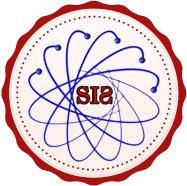FUNCTIONS OF LEXICAL STYLISTIC DEVICES: IRONY
Keywords:
Irony, verbal irony, situational irony, dramatic irony, stylistic devices, literary critique, societal commentary, cognitive engagement, emotional depth, rhetoric.Abstract
This article delves into the functions of irony as a significant lexical stylistic device in literature, communication, and culture. Irony’s strength lies in its ability to create contrasts between literal and intended meanings, fostering cognitive engagement, emotional resonance, and societal critique. The article categorizes irony into verbal, situational, and dramatic types, analyzing their unique roles. Practical examples from literary texts, films, and everyday communication illustrate its diverse applications. The conclusion underscores irony’s timeless relevance in addressing the complexities of human existence.
References
1. Abrams, M. H. (2012). A Glossary of Literary Terms. Wadsworth Cengage Learning.
2. Booth, W. C. (1974). A Rhetoric of Irony. University of Chicago Press.
3. Colebrook, C. (2004). Irony. Routledge.
4. Fowler, R. (1987). A Dictionary of Modern Critical Terms. Routledge.
5. Hutcheon, L. (1994). Irony's Edge: The Theory and Politics of Irony. Routledge.
6. Kierkegaard, S. (1841). The Concept of Irony. Harper Torchbooks.
7. Knox, N. (1961). The Word Irony and its Contexts, 1500-1755. Duke University Press.
8. Muecke, D. C. (1969). The Compass of Irony. Methuen.
9. Simpson, P. (2003). On the Discourse of Satire: Towards a Stylistic Model of Satirical Humour. John Benjamins Publishing.
10. Spencer, L. (2017). Satire and Irony in Literature. Cambridge Scholars Publishing.





























